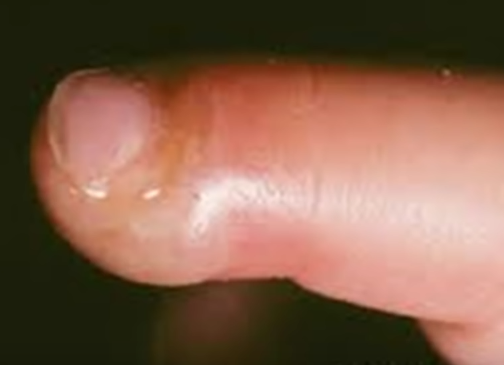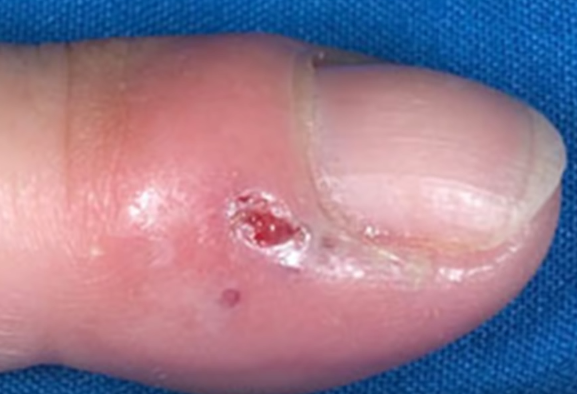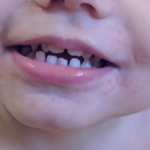Herpes whitlow is a skin rash caused due to infection by herpes simplex virus/HSV. The early stages of the infection is marked by formation of tiny, reddish, and elevated spots or bumps on skin, especially the fingers. The abnormal bumps will then worsen and turn into a severely painful and discomforting lesion. Sometimes, the pain may be debilitating and hamper daily life.
Herpes whitlow is caused by infection by both HSV-1 and HSV-2 strains of herpes simplex virus. People of both genders and all age groups are vulnerable to this skin infection. Herpes whitlow is not that prevalent in the US with the incidence rate being 5 in 100,000 people.
Symptoms of Herpes Whitlow
The symptoms of herpes whitlow typically occur over a period of 2 to 20 days from the day of contact with the virus. Some of the common signs and symptoms are mentioned below:
- Patients may initially experience fatigue, exhaustion, and a flushed condition
- The initial tiredness may be followed by pain, discomfort, and other problems of the fingers infected by herpes whitlow
- In about seven days after exposure to the virus, patients may experience blister formation. The blisters are filled with fluids which ooze out after rupturing of the blisters. Open sores are left in the aftermath.
- The lymph nodes present in armpits may elicit tenderness
- Most patients recover from the infection in 2 to 3 weeks. After the skin rash disappears, the virus passes into the Schwann ganglia and peripheral ganglia cells and remains in dormant phase.
- As compared to first time herpes whitlow infection, recurrent cases are typically marked by less painful and discomforting symptoms. They also tend to have a faster recovery period.
Herpes whitlow infection symptoms tend to be similar to most forms of herpes infections. In case of recurrent infections, then the body area that is most susceptible to developing the anomalous symptoms of herpes whitlow is the skin.
Causes
- Herpes whitlow skin infection is caused by the herpes simplex virus.
- There are two types of herpes simplex virus, i.e., herpes simplex virus type I/HSV-1 and herpes simplex virus type II/HSV-2. HSV-1 infection typically occurs on the skin next to the nose, lips, mouth, and other facial areas. HSV-2 infection occurs in body areas like the genitals and buttocks. Sometimes, the opposite can occur, wherein HSV-1 infection may affect the buttocks and genitals, while the face, nose, etc., may suffer from HSV-2 infection.
- HSV-1 is responsible for causing about 60% of herpes whitlow skin rashes, while rest 40% of cases are caused by HSV-2 infections.
- Tears or breaks in the skin such as a broken cuticle at a fingernail’s far end facilitate the entry of HSV into the body. The virus then multiplies and infects all the tissues of the finger/fingers.
- HSV-1 and HSV-2 both cause two kinds of infections, i.e., primary and recurrent. Herpes whitlow infection is highly contagious; it can easily transfer to healthy individuals and cause primary HSV infections. It may however be noted that just about 20 percent of patients with primary herpes whitlow cases experience visible and painful skin sores and blisters formation.
- People of all ages, races, and genders are susceptible to developing herpes whitlow. However, medical and dental doctors and children are more prone to the infection.
- Sucking of thumb by children can cause the transfer of a pre-existing herpes infection from the fingers to the mouth and/or lips
- Exposure to contagious lesions in a patient with HSV infection by doctors may increase their risk to developing herpes whitlow
- Medical and dental health professionals as well as children typically suffer from HSV-1 infections, while others experience HSV-2 infections.
Some of the triggers that can activate dormant stage HSV and result in skin infections are listed below:
- Illnesses
- Fever
- Emotional stress
- Trauma
- Surgery
- Sunlight exposure
- Hormonal problems or imbalance, such as those occurring during menstruation or pregnancy
Treatment of Herpes Whitlow
Herpes whitlow infection is self-limiting. The condition disappears in about 14 days on its own. Listed below are some treatment options and self-care guidelines for herpes whitlow:
- Ice packs or cool compresses can help find relief from discomfort, redness, and swelling
- Fever and/or intense pain can be eased with pain medications
- Antiviral medicines can help prevent the migration of HSV infection to other areas
- Secondary infections of blisters and open sores by bacteria are treated with antibiotics
Patients need to follow certain steps to prevent the transmission of HSV infection as it is very contagious. The below listed guidelines need to be adhered to in the early stages and in the active phase as well:
- Cover and bandage the fingers with herpes whitlow
- Avoid sharing linens, towels, and other personal effects with others
- Avoid scratching the blisters, sores, or lesions. Doing so can cause wounds and increase risk to secondary infections.




